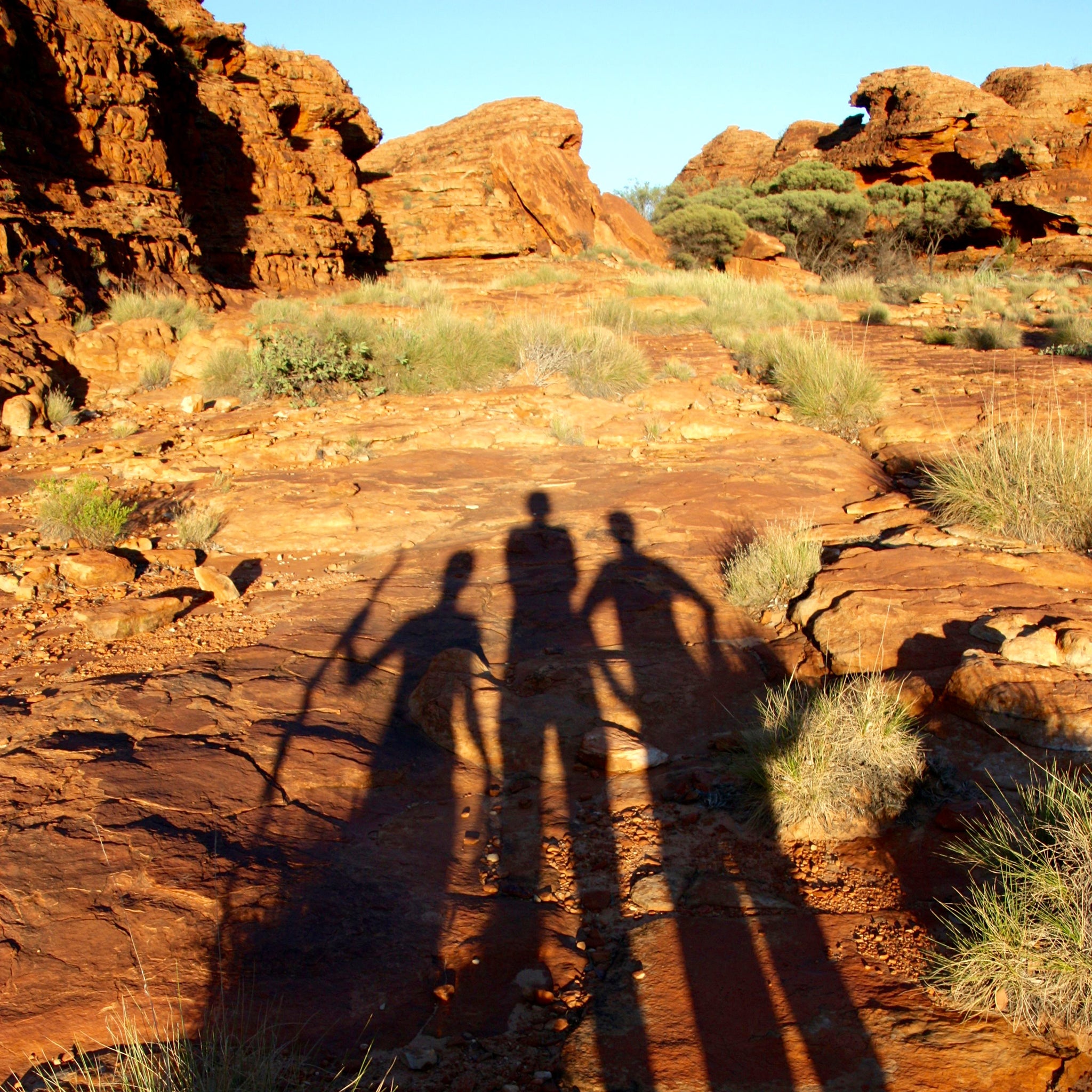Red Centre, Australia - In search of red: The Rainbow Hunters
One mother, two boys, on a trip around the world to seven countries to find the origin of seven colours

It is dark and cold as we drive in the pre-dawn light towards the great mound of rock that lies like some sleeping giant in the middle of Australia’s red-hearted desert. We can see it silhouetted against the blue-black sky, a dark hump blocking out the stars and the sinking full moon. We follow the road around to the north side, park the car, and follow the dust track through the spinifex grasses to where we will wait for the sun to rise against Uluru.
Three days ago we found what we had come here for. We set off from Alice Springs towards the West MacDonnell Ranges on a long and empty road into a wilderness of burning orange, doing exactly what you shouldn’t do in the Australian outback. We left on the spur of new information about the Ochre Pits, with only a small bottle of water and no food, and told no one where we were heading. My phone lost its signal five miles out of town.
We passed no other vehicles. We were alone, completely, in the immenseness of Australia’s Red Centre.
Then, 80 miles west of Alice Springs and eight miles from Serpent Gorge, in a dried-out creek, we found the Ochre Pits of the West MacDonnell Ranges. Rusted colours that streaked from sky to ground down the cliff walls; orange, yellow, white and deep rich red, the colour we had come for. For centuries these pits have been used by local Aboriginal tribes, who traditionally use the ochre for medicines and ceremonial body paint.
“I think we’re being watched,” my son, Orly, whispered. And it felt like that – a forgotten world of ghosts, where some of Australia’s first inhabitants had come, like us, in search of the colour red.
And now, here we are at the foot of Uluru, the great rock that sits so silently in the endless surrounding desert, its cave walls still painted to this day with the same red ochre we had found, pictures depicting the Anangu Aboriginal people. Here we wait for the sunrise; the stars have dimmed and the horizon is pale. Finally, the sun appears like a fireball on the horizon and Uluru, the great sandstone ship of the desert, is lit a bright shimmering red.
Lindsay Hawdon’s debut novel, ‘Jakob’s Colours’, is published by Hodder and Stoughton; £14.99. Read more at therainbowhunters.com
Subscribe to Independent Premium to bookmark this article
Want to bookmark your favourite articles and stories to read or reference later? Start your Independent Premium subscription today.

Join our commenting forum
Join thought-provoking conversations, follow other Independent readers and see their replies